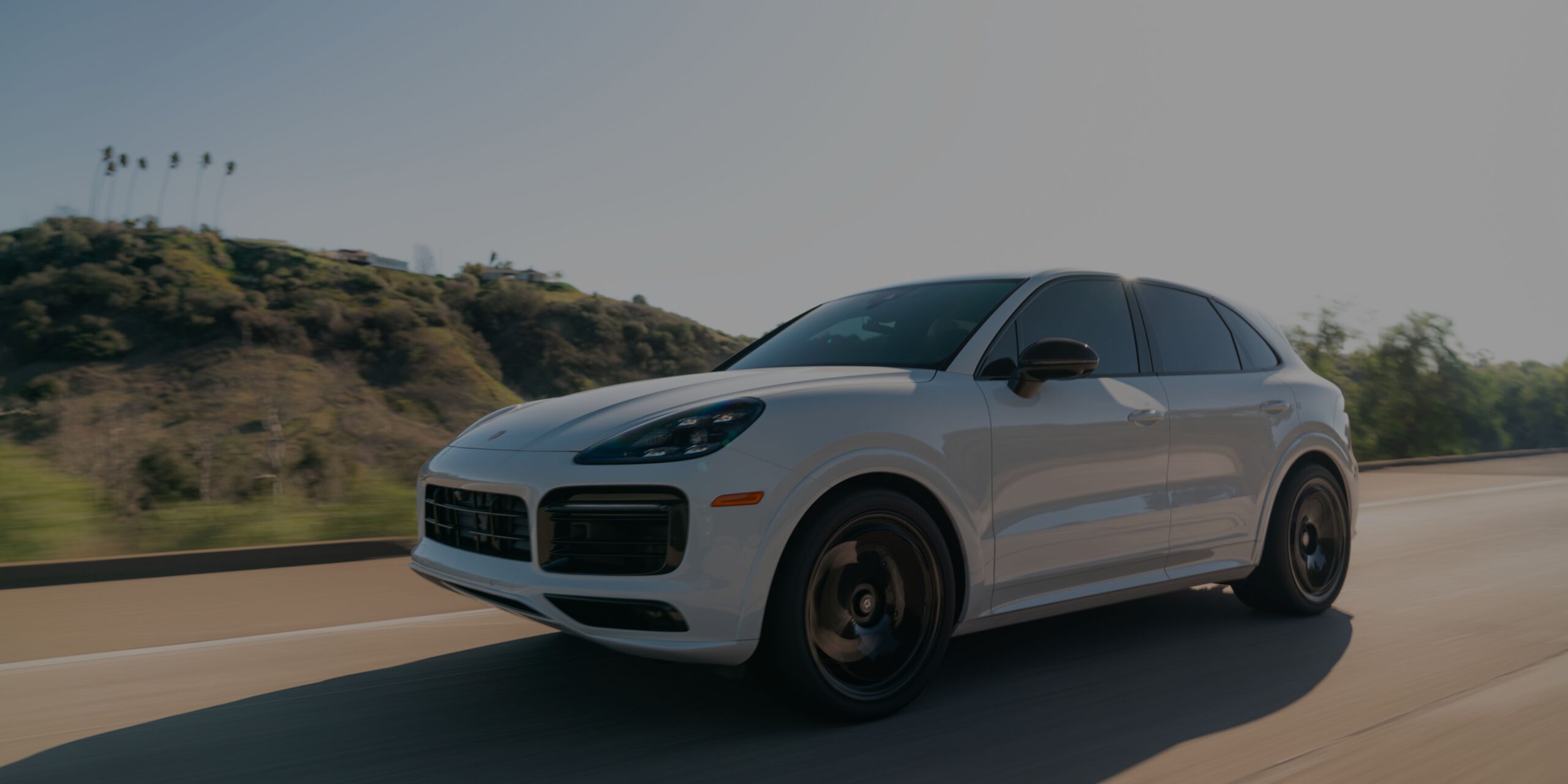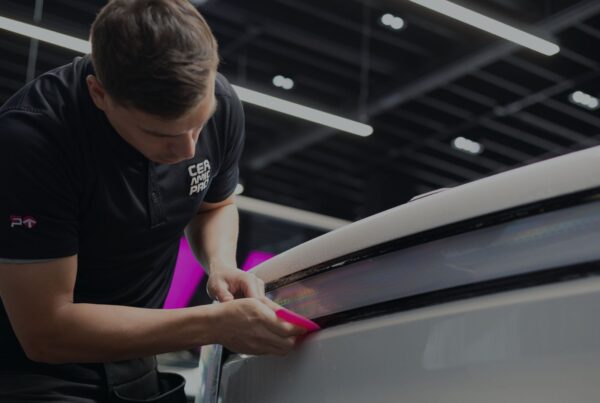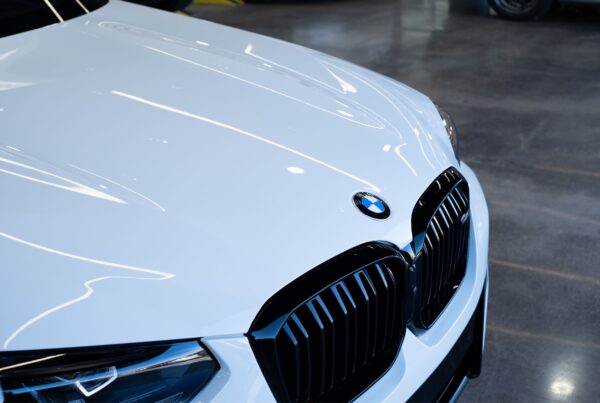Automotive enthusiasts and car owners strive to keep their vehicles pristine, safeguarding their investment and ensuring a lasting aesthetic appeal. The introduction of advanced technology has introduced various methods for protecting a car’s paint job, and one such innovation is called Paint Protective Film (PPF).
PPF has gained popularity for its ability to shield a vehicle’s exterior from road debris, minor scratches, and environmental factors. It is a relatively fool-proof way to ease the burden of vehicle maintenance. However, no form of paint protection comes maintenance-free. The question arises: Is paint protective film hard to maintain?
In this article, we will dive into the world of PPF, explore its benefits, understand the maintenance it requires, and compare its upkeep to that of regular automotive paint.
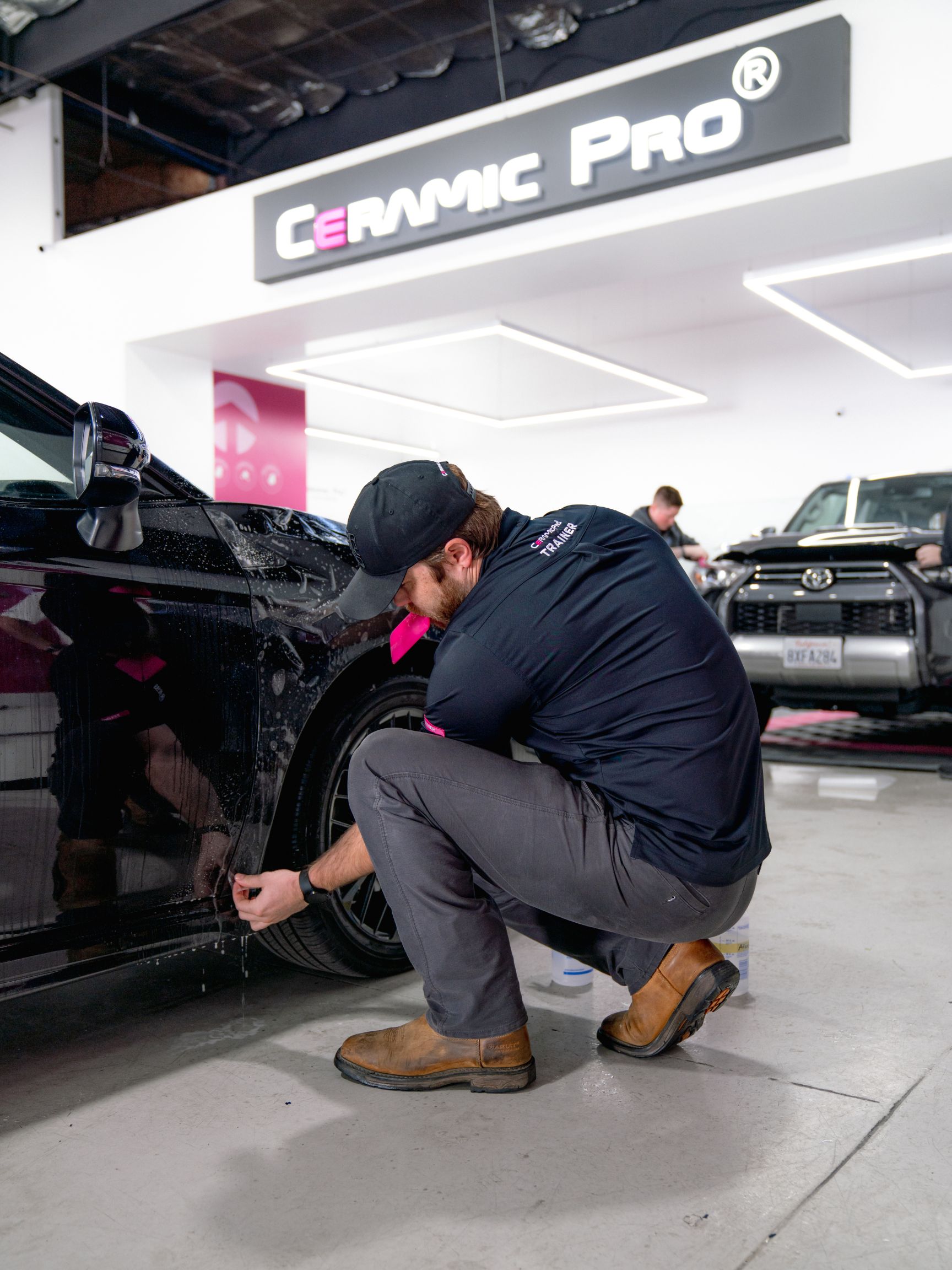
What is Paint Protection Film?
To understand the benefits and maintenance of paint protective film, it’s essential first to understand what it is. PPF, sometimes called a clear bra, is a transparent thermoplastic urethane film. In the automotive space, this film is applied over the car’s paint to help protect it from potential damage. While it won’t save you from damage caused in a collision or hitting larger objects on the road, PPF will absorb the impact of small debris, such as stones, sand, and gravel, that the tires of other vehicles can kick up.
Left uncovered, this debris can slowly chip away and scratch the vehicle’s paint finish, leaving you with dulled paint and, in some areas, even chips of paint missing altogether. This is typically common in areas lower on the front end of the car, like the front bumper, rocker panel, and even the fenders.
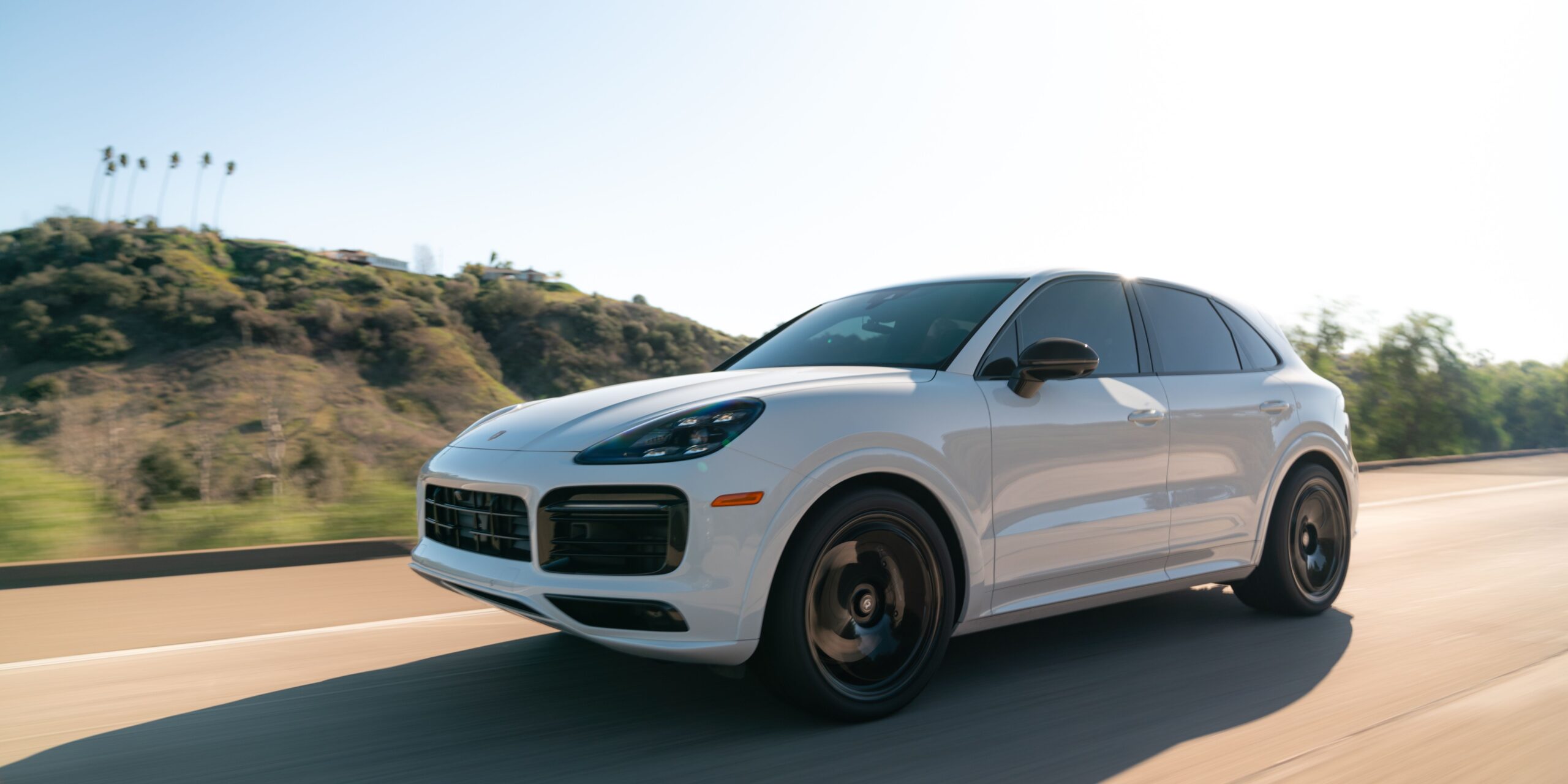
What are the Benefits of Paint Protection Film?
The main benefit of paint protective film is to prevent damage to automotive paint from daily wear and tear, and that in itself has many advantages:
Preservation of Resale Value
Automotive paint is one of a vehicle’s most critical aesthetic resale points. Keeping this paint in good condition allows the car to look well-maintained and cared for, a characteristic many second-hand buyers care about without worrying about repainting.
Properly Installed PPF is Invisible
Unlike the cosmetic change you get from applying a vinyl wrap to your vehicle, a proper PPF installation is designed to protect the paint below it without detracting from the car’s appearance.
Paint Protection Film is Easier to Maintain
PPF is easier to maintain than automotive paint and more forgiving. Because it protects against small rock chips, it also means that you don’t have to repair minor damages to the paint over time. A PPF that comes pre-installed with a ceramic coating, like Ceramic Pro KAVACA Ceramic Coated, is even easier to maintain due to the hydrophobic effects.
Check Out Our Youtube Video: Why Paint Protection Film for Tesla Models Makes Sense
Maintaining Paint Protection Film
Like any other aspect of car care, paint protective film requires attention and regular upkeep to ensure adequate protection while maintaining its discreet appearance. However, this maintenance is more forgiving to busy schedules and lack of car than your bare automotive paint.
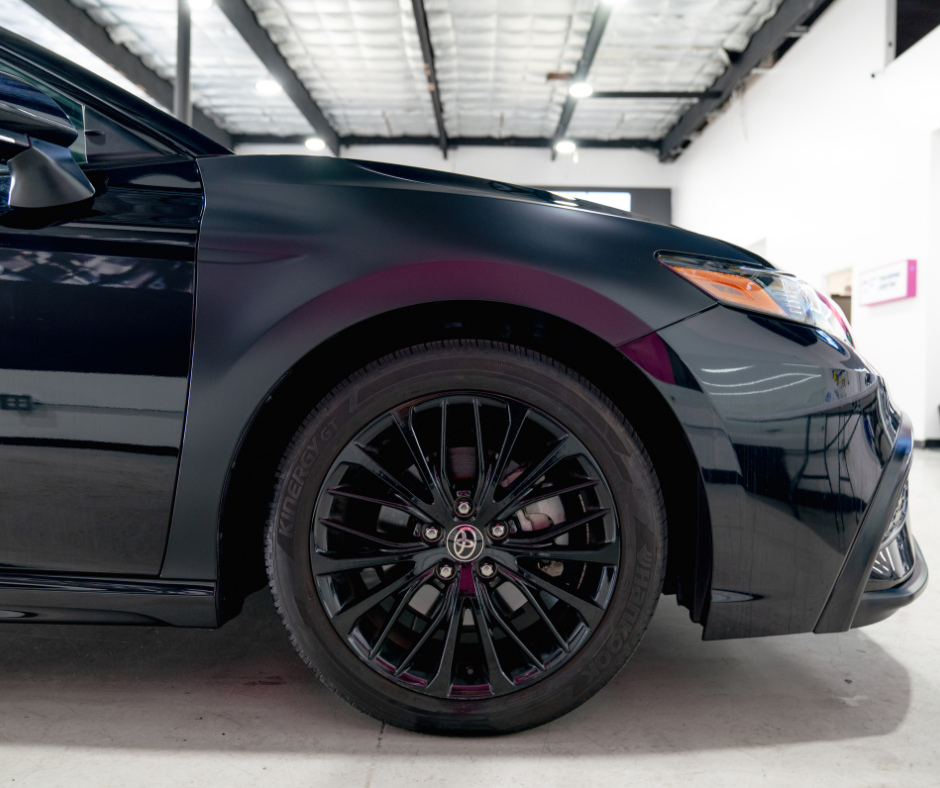
Here’s what proper PPF maintenance looks like:
Washing: Regular car washing is crucial to prevent dirt, dust, and contaminants from accumulating on the PPF. Use a mild automotive detergent and a microfiber wash mitt to clean the film gently. Avoid abrasive brushes or sponges that could scratch the surface.
Drying: Using a clean microfiber cloth to dry the PPF after washing. Avoid using air blowers or towels with rough textures that could damage the film.
Detailing: Applying a spray detailer or quick detailer can help maintain the film’s glossy appearance between washes. These products also provide an extra layer of protection against contaminants.
Avoid Harsh Chemicals: When cleaning the PPF, avoid using harsh chemicals or solvents that could degrade the film’s adhesive properties or cause discoloration.
Regular Inspection: Periodically inspect the PPF for any signs of damage, lifting, or peeling at the edges. If you notice any issues, address them promptly to prevent moisture or dirt from infiltrating beneath the film. This also helps maintain your warranty correctly.
Ceramic Coating and Sealing: Some PPF manufacturers, like Ceramic Pro, recommend applying a specific coating or sealant designed for use with their film. This can enhance the film’s longevity and maintain its appearance.
While that may sound like a daunting list of tasks and things to remember, how does it compare to a regular maintenance schedule for uncovered automotive paint?

What is the best way to maintain your paint protection film?
Americana Global Vinyl & PPF Soap
Comparing Maintenance: PPF vs. Regular Automotive Paint
To truly address whether paint protective film is hard to maintain, it’s important to compare its maintenance requirements to those of regular automotive paint.
PPF Maintenance Pros:
- Resistance to Debris: PPF is highly effective at resisting damage from small debris, such as rocks and road particles, which are common causes of paint chips.
- Chemical Protection: PPF offers better resistance to certain chemicals, like bug splatters and bird droppings, which can etch and damage traditional automotive paint.
- Easier Washing: PPF is generally easier to wash and clean due to its smooth surface and contaminant resistance.
- Self-Healing Properties: A high-quality PPF does, to some degree, have self-healing properties that can reduce the appearance of swirls or scratches in the film. It even helps improve the appearance of your clear coat.
PPF Maintenance Cons:
- Vulnerable Edges: The edges of PPF are more susceptible to lifting and peeling, especially if not professionally installed or adequately maintained. A skilled paint protection film installer will tuck the edges, making it less likely to lift and peel.
- Scratch Sensitivity: While PPF can resist minor scratches and rock chips, it is not impervious to all blemishes, particularly those caused by sharp or abrasive objects.
- Limited Self-Healing: Some higher-end PPFs have self-healing properties that can repair minor swirl marks and scratches over time, but this isn’t a universal feature.
Regular Automotive Paint Maintenance Pros:
- Ease of Repair: While traditional paint is susceptible to damage, repairing scratches, swirls, and minor imperfections is often easier and can be done at home or by professionals.
- Less Edge Vulnerability: Regular paint doesn’t have vulnerable edges that can lift or peel over time, reducing the risk of moisture and dirt getting trapped underneath.
- Cost: Maintaining regular paint may be less costly over time, as it doesn’t require specialized products or treatments.
Regular Automotive Paint Maintenance Cons:
- Susceptibility to Damage: Traditional automotive paint is more vulnerable to damage from rocks, road debris, and chemical contaminants.
- Labor-Intensive: Maintaining the glossy appearance of regular paint can require more frequent labor.
- No Protection: Even with regular maintenance, traditional paint doesn’t any level of protection against road debris and minor impacts.
The Verdict on PPF Maintenance
Is paint protective film hard to maintain? The answer lies in considering the pros and cons of PPF maintenance compared to regular automotive paint. While PPF requires some level of attention, it offers significant benefits in damage prevention, chemical resistance, and easier cleaning. The maintenance of PPF is generally less labor-intensive than the extensive polishing and paint correction required to keep traditional paint looking its best. Even new cars require extensive maintenance to be free of imperfections. However, it’s essential to address any issues promptly, such as edge lifting, to ensure the longevity of the film’s protective properties.
Check Out Our Youtube Video: The Best Paint Protection Film
Ultimately, the choice between PPF and traditional paint maintenance depends on individual preferences, driving habits, and the desired level of protection for the vehicle. Regardless of the chosen method, investing time and effort into proper maintenance will undoubtedly extend your vehicle’s life, appearance, and even value.
Paint protection films, like Ceramic Pro KAVACA Ceramic Coated and KAVACA Matte, are backed by a +10-year warranty. This makes protecting your Porsche, Audi, Tesla, or any other luxury vehicle much easier while also providing peace of mind knowing that your PPF is protected as well.
KAVACA Ceramic Coated combines the benefits of a high-quality PPF and Ceramic Pro’s industry-leading ceramic coatings. Protect your car from rock chips while also having the added gloss, depth, and hydrophobicity. KAVACA Matte is a great way to protect your matte paint job, or transform and restyle your gloss paint with a matte finish.
Ready to enjoy the benefits of Paint Protective Film on your vehicle? Connect with our network of top installers nationwide with our directory of Elite Dealers. Our Elite Dealers also provide ceramic coatings and some of the highest-performing luxury ceramic window tints on the market.

